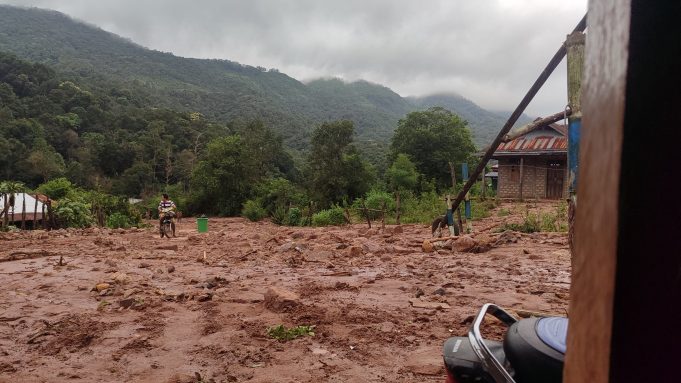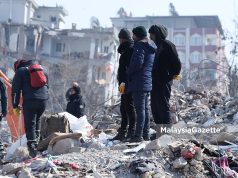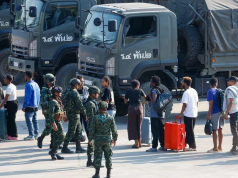LOIKAW – War-weary Myanmar villagers salvaged crops from flooded fields Tuesday as the country’s death toll in the wake of Typhoon Yagi doubled to 226 and the UN warned as many as 630,000 people could need assistance.
State TV in junta-ruled Myanmar confirmed 226 fatalities late on Monday, with 77 people missing, doubling the previous toll of 113.
The crisis has only deepened people’s miseries in Myanmar, where millions have suffered through more than three years of war since the military seized power in 2021.
In Loikaw district in eastern Kayah state — which has seen fierce fighting between junta forces and armed groups opposed to its rule — villagers rued their latest trial.
“We have already faced wars and fled from villages many times,” local Chit Thein told AFP.
“We have many troubles and now it’s floods again — so much suffering in our lives.”
In nearby fields, farmers laboured to save a rice crop completely submerged in paddies by the floodwaters.
More than 150,000 homes have been flooded and nearly 260,000 hectares (640,000 acres) of rice paddies and other crops destroyed, according to Myanmar state media.
The junta has begun relief efforts, opening more than 400 camps according to state media, and appealed for international aid.
But in Loikaw district, Chit Thein said the people of Phayarphyu village were still waiting for help.
“There are many things we have lost. We lost houses, clothes in the wars, and now floods have hit our house so we have nothing left,” he said.
“We are sheltering at a monastery. But there is not much food for us and no donations, and no-one has come to help us.”
The United Nations Office for the Coordination of Humanitarian Affairs (UNOCHA) said an estimated 631,000 people had been affected by flooding across Myanmar.
Food, drinking water, shelter and clothes are all urgently needed, UNOCHA said, warning blocked roads and damaged bridges were all severely hampering relief efforts.
The UN’s World Food Programme on Monday said the floods were the worst in Myanmar’s recent history, without giving precise details.
Severe flooding hit the country in 2011 and 2015, with more than 100 deaths reported on both occasions, while in 2008 Cyclone Nargis left more than 138,000 people dead or missing.
The junta issued a rare appeal for foreign aid at the weekend, with neighbour India so far the only country to respond, sending 10 tonnes of materials, including dry rations, clothing and medicine.
UNOCHA said more resources are urgently needed.
In recent years Myanmar’s military has blocked or frustrated humanitarian assistance from abroad, including after powerful Cyclone Mocha last year when it suspended travel authorisations for aid groups trying to reach around a million people.
Even before the latest floods, people in Myanmar were grappling with the effects of three years of war between the junta and armed groups opposed to its rule, with millions forced from their homes by the conflict.
Across southeast Asia, hundreds of thousands of people have been forced to flee over the past week as Yagi rains swelled rivers and creeks beyond bursting point.
Many had to wade through murky brown waters up their chins, while others used whatever means they could — including elephants in Myanmar and jetskis in Thailand.
Thailand’s northern provinces were hit hard, with one district reporting its worst inundations in 80 years.
The death toll in the kingdom rose to 15 on Tuesday, according to new figures from the Department of Disaster Prevention and Mitigation.
Prime Minister Paetongtarn Shinawatra’s government said it would make $90 million available for flood relief, announcing financial aid of up to $6,000 per household for those affected by the floods.
In Vietnam, the death toll stands at 292, with 38 missing, more than 230,000 homes damaged and 280,000 hectares of crops destroyed, according to authorities.
Yagi, the strongest typhoon to hit the north of the country in decades, tore across the densely populated Red River delta — a vital agricultural region that is also home to major manufacturing hubs — damaging factories and infrastructure, and inundating farmland.
The typhoon caused an estimated 40 trillion dong ($1.6 billion) in economic losses, state media reported, citing an initial government assessment. – AFP

















